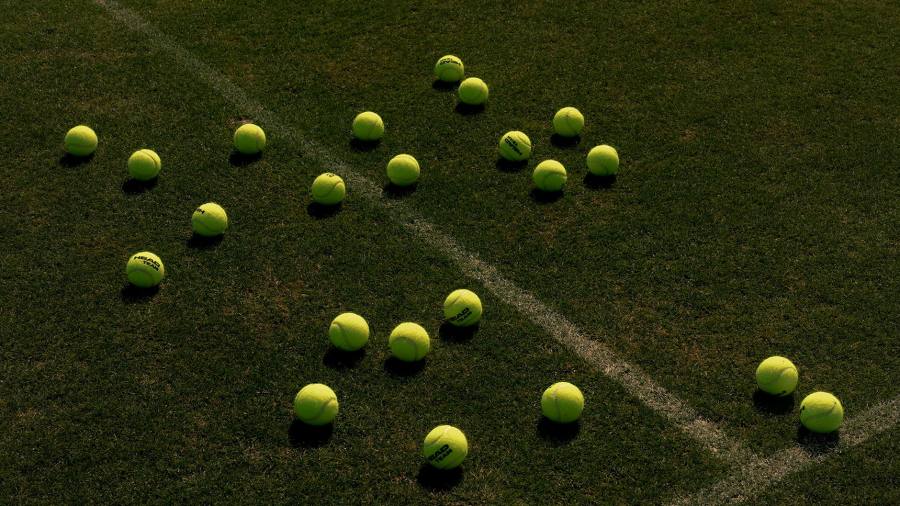
Receive free Tennis updates
We’ll send you a myFT Daily Digest email rounding up the latest Tennis news every morning.
This article is part of a guide to tennis from FT Globetrotter
Over the past 20 years, I have been making a pilgrimage to Wimbledon, often from places as far away as Beijing and New Delhi. Long before that, I had been reverentially imagining it every summer since 1975 when I fell under its spell listening to BBC radio commentary of the event, long before we had a TV in my family’s tennis-obsessed home in Kolkata.
To fully understand Wimbledon’s peculiar mystique, one needs to visit the grounds outside the All England Club, where the queue begins for those trying to get 500 Centre Court and 500 No 1 Court tickets, as well as the thousands of grounds passes sold on the day. With water-refill stations, food outlets and ATMs, this huge area of Wimbledon Park resembles a Disney-esque theme park. Teams of the All England Club’s dark-blue-blazered volunteer stewards are deployed to update queuers on the action inside and even act as a wake-up alarm at 6am for those who spend the night in the park.
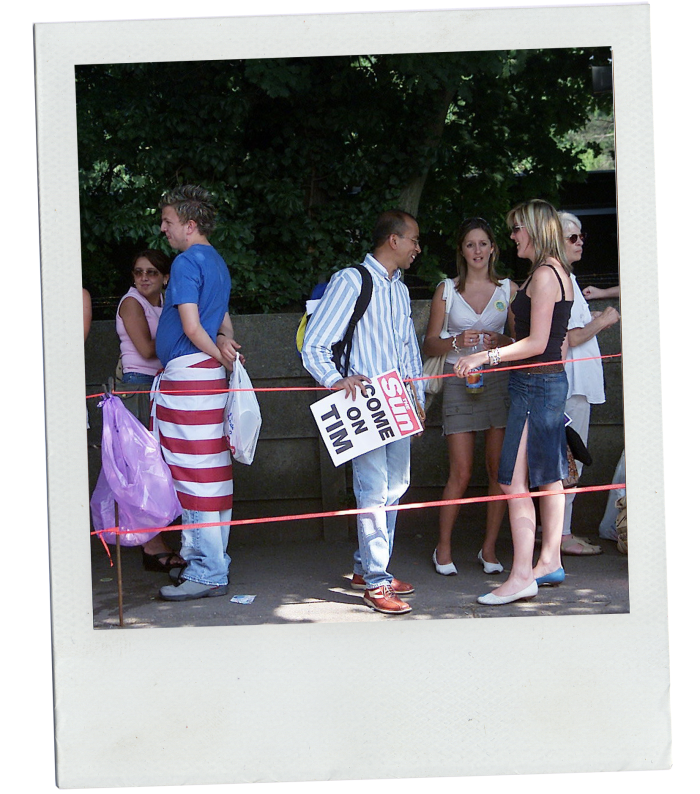
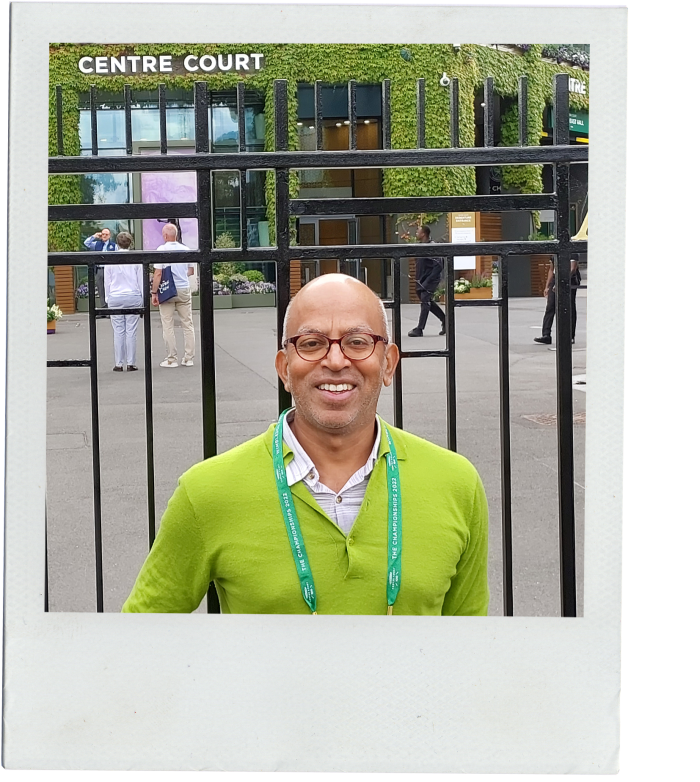
A couple of decades ago, I was ceremoniously ejected from the queue after being in it for six hours. Even this was done with such civility that I came away admiring the rigour of its rules even more. That year, the club had for the first time handed out a slip of paper to those entering the queue. Distracted by a phone conversation about renting a flat, I had entered the line without it.
At the other end of the ticket spectrum are the buyers of the debentures, which have funded the tournament’s new projects for decades, including the miraculously translucent, concertina-style retractable roofs over the two show courts. The practice of issuing debentures dates to 1920. The current 2021-25 series for Centre Court trade at about £115,000 in the secondary market for a seat on that court every day of the Championships, a premium on the £80,000 the debentures cost when they were issued. In other words, as there are more buyers than there are debentures, the price rises even though the new owner will not be owning them for the full run of five Wimbledons. This suggests the pleasure and prestige of attending the tournament plays a large part in its valuation.
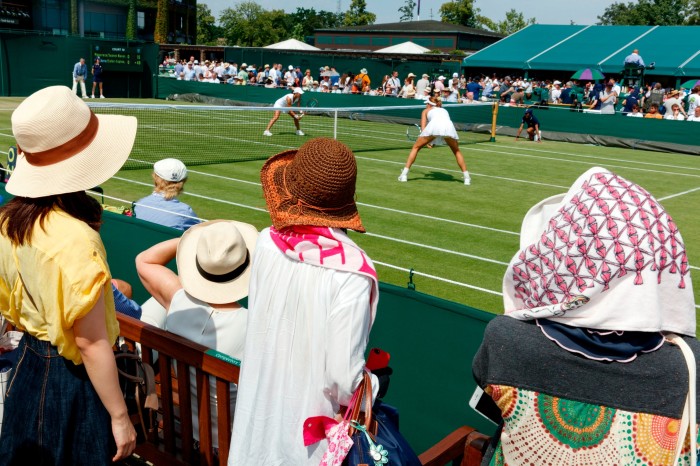
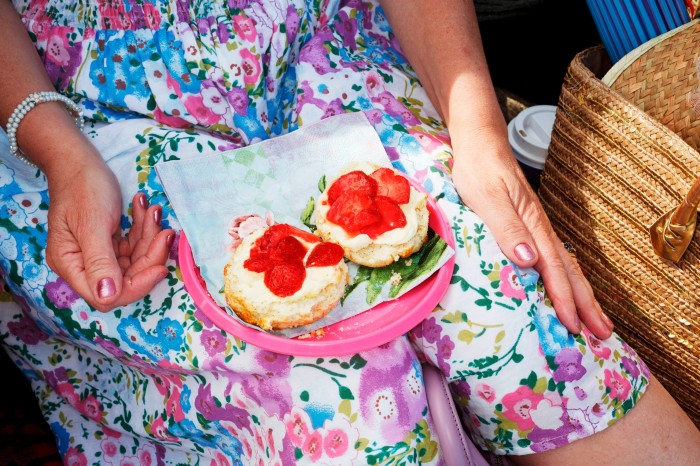
Wimbledon may be the most celebrated and hotly contested Grand Slam tournament, but it enables thousands of people every year to enjoy a Cinderella moment. If by the luck of having snagged a ticket via its annual ballot, or because you had the financial nous to buy a debenture for north of £100,000 or one of its hospitality packages offered by Keith Prowse, or have the stamina to queue overnight, you manage to secure a seat on Centre Court, you will be treated very well indeed. There is something paradoxically egalitarian and exclusive about being on the club’s hallowed grounds during the fortnight.
For about a decade and a half, I have been a member of its vast press corps, writing features on the tournament, many for the FT. The familiar routines of my annual journeys back to SW19 have, if anything, made me more compulsively obsessive about attending this English garden party that doubles as a tournament.
Once within the grounds, I am prone to miss lunch as I navigate my way between matches on the show courts. I am often in an unseemly full sprint to make it to No 3 Court, say, before the changeover ends and ushers (usually volunteers from the British armed forces, another delightful quirk of the Championships), insist you wait for the next break.
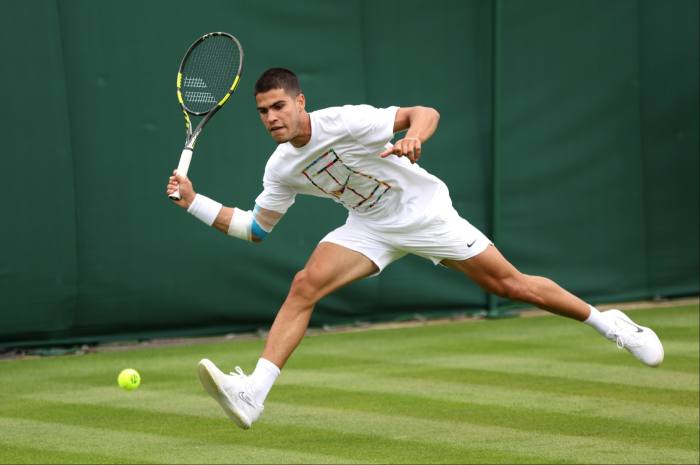
Wimbledon somehow manages to preserve the feel of a club tournament that just happens to feature the world’s best tennis players. Centre Court attendees, even those with access to hospitality tents and separate dining rooms, are urged to be on Centre Court in time for the start of the featured matches. There are thus no gaps of empty courtside seats, as is often the case with corporate boxes at the US Open, where the premier court is so large that its upper reaches afford a better view of the New York skyline than of the tennis.
While I love the intensity of the fortnight itself, one of the most special times is the weekend before the tournament starts. Over those two days, players have practice sessions, and as a member of the media, you are allowed to watch them courtside. Last year, as I took a close-up photograph of Carlos Alcaraz nearly obliterating the ball 15 feet away, I realised the person kneeling to tie his laces next to me was Novak Djokovic. The Serb is among the most approachable of stars, but I was too overawed to speak to him, despite being a huge fan of his pugnacious style and mental toughness.
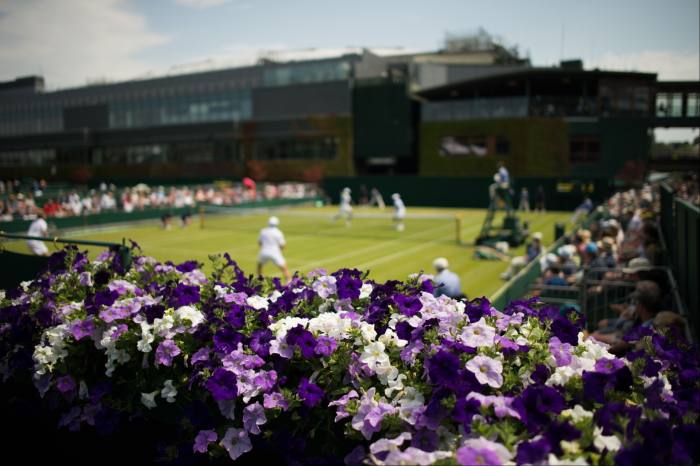
Last summer, with strikes and staff shortages, London seemed like a city seizing up. Despite that, everything in SW19 felt as serene and organised as ever when I arrived at Wimbledon on a perfect summer’s day. Everyone I met, from a gardener putting in new pots of the club’s trademark purple, white, green and blue petunias and hydrangeas to the temporary staff in the cafeteria, seemed in an irrepressibly good mood.
Leaving a pre-tournament press conference, I realised I had the timings wrong for a practice session between two of the sport’s most elegant players, Grigor Dimitrov and Félix Auger-Aliassime. I ran as fast as I could, embarrassingly almost colliding with Auger-Aliassime as he came away from the courts. He smiled anyway as I wished him luck. There was a glorious fortnight ahead, but if you are a tennis fan, it is never quite long enough.
What for you epitomises the Wimbledon experience? Tell us in the comments below. And follow FT Globetrotter on Instagram at @FTGlobetrotter
Cities with the FT
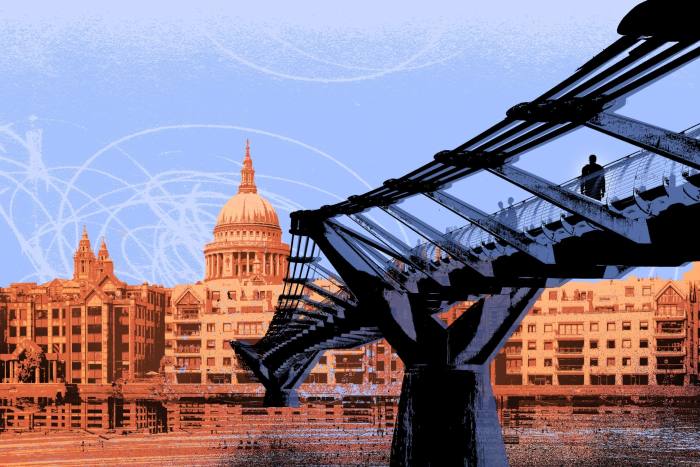
FT Globetrotter, our insider guides to some of the world’s greatest cities, offers expert advice on eating and drinking, exercise, art and culture — and much more
Find us in London, Tokyo, New York, Paris, Rome, Frankfurt, Singapore, Hong Kong, Miami, Toronto, Madrid, Melbourne, Copenhagen and Zürich